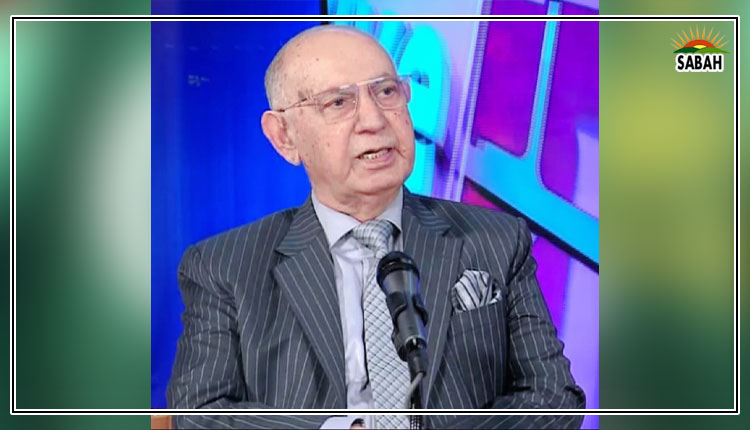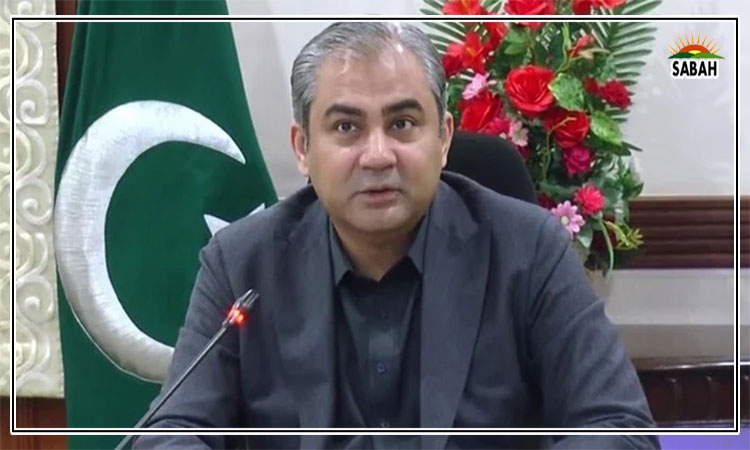This is a ticking clock…Dr Khaqan Hassan Najeeb
The need for being absolutely accurate in our strategy for solving the immediate economic fragility has never been greater. Pakistan is teetering on the edge of an acute external sector challenge. Only extraordinary actions taken with extraordinary speed can restore economic stability.
Tragically, there is a certain vacuum of short-term economic strategy in the country. This is giving jitters to the public and markets – both already sceptical of the motivation and ability of key institutions, policy makers, leaderships and business community to weather the storm.
External sector data for initial months of Fiscal Year (FY) 23 is discomforting. Foreign exchange reserves held by the State Bank of Pakistan (SBP) have plummeted to a disturbingly low level of $6.1 billion as of December 16, 2022 an erosion of $11.6 billion since December 2021. The $6.1 billion covers just more than a month of imports whereas three months is considered an appropriate cover period.
Pakistans current account deficit (CAD), a key component of balance of payment (BOP), stands at $3.1 billion from Jul-Nov 2022 against $7.2 billion in the same period last year. Current account records the value of the flow of goods and services, repatriation of profits and inflow of remittances from expats. The improvement in CAD has been mainly due to a fall in imports by $4.8 billion (-16 per cent) to $24.9 billion, clipped through temporary administrative measures. Export receipts have marginally decreased by 2 per cent to $12.1 billion while remittances have fallen by a sizeable 14 per cent to $12 billion in the first five months of FY23 compared to the same period last year.
The other important part of BOP is the financial account, which consists of direct investment, portfolio investment, other investments, and financial derivatives. The financial account has deteriorated significantly with a meagre net inflow of $1.1 billion during the first five months of FY23, compared to $6.0 billion during the same period last year, leading to an overall imbalance in the BOP.
Any economy facing a precarious economic situation the kind Pakistan is facing has little choice but to keep the IMF as an anchor. There is a constant anxiety in the country on the implementation of adjustments with the IMF. Concerns on the part of the policymakers relate to erosion of political capital. Citizens fear that the already burgeoning inflation may get worse by adhering to conditions of raising utility prices. The worry of the executive is on the ability of the system to ensure implementation of agreed deliverables.
Anxieties must be put aside. Authorities have to complete the revisions to macro-economic and fiscal frameworks post floods, adhere to agreed benchmarks, and ensure cost recovery in the energy sector to move forward with the Ninth Review.
Disengaging with the IMF is fraught with dangerous consequences. Foreign fund flows from multi-lateral and bilateral partners would evaporate and borrowing cost would rise, plunging the economy into severe distress. Pakistan may be forced into harsher adjustments than the current IMF conditions, painful debt restructuring, disorderly movement of currency and possible shortages of basic goods and industrial raw material.
Support from friendly countries without the IMF will merely postpone the precipitating situation. The choice before Pakistan is quite clear: embrace the difficult adjustments under the IMF programme or fall into uncharted territory of painful times without the IMF.
Authorities have put into effect temporary measures restricting repatriation of funds abroad from Pakistan and curtailing imports to stabilize the BOP. They are using moral persuasion, regulatory and administrative controls to restrict imports and preserve foreign exchange. Non-essential imports of about 15 per cent under three Harmonized System codes of 84, 85 and 87 for classification of goods are being discouraged. The thought process is to limit the import bill to less than the amounts received from exports and remittances.
There is reasonable expert agreement on the necessary moves that have to be taken immediately. A key area is the prudent management of the exchange rate a wickedly complicated issue. An exchange rate is a relative price of a currency expressed in terms of another currency or group of currencies. For an economy like Pakistan engaged in international trade, the exchange rate is an important economic variable. Changes in it affect economic activity, inflation and Pakistans BOP.
Authorities have to think about the widening spread in the interbank and open markets rates. This trend is beginning to have unintended results of slowing export receipts and diverting remittances towards informal channels. One must believe that allowing alignment of the exchange rate reflective of weaker fundamentals and financial standing today is not a permanent phenomenon. Strengthening of economic fundamentals and improvement in sentiment can lead to a strengthening of the rupee in the future. Any deviation from the agreement of a market-based exchange rate with the IMF may further delay completion of the Ninth Review.
Pakistans access to international bond markets is virtually closed. Roshan Digital Accounts (RDA) remain a key source of access to foreign currency investment. It is advisable to raise the rate of return offered on RDAs considering global increase in interest rates and an amplified risk profile of Pakistan.
Energy conservation is the decision and practice of using less energy, thus saving precious foreign exchange for an energy importer like Pakistan. The government has for the second time made an effort to move in this direction. We must be serious to implement measures of use of daylight timings, closure of commercial activity at sunset, mandatory car-pooling for schools, odd-even car allowance days, allowing only daytime functions including festivities and political gatherings, moving to a shortened working week, pushing remote work and mandating people to turn refrigerator, air-conditioners and heaters down.
Additionally, energy efficiency is an ignored area in Pakistan. It is about using technology that requires less energy to perform the same function. Efficiency ratings stamped on our consumer goods would be a good place to start. Energy conservation and efficiency strategies can save on imports and ease pressure on the BOP.
Conscious decisions need good market data. Average cost of piped gas has risen to around Rs1,000 / mmbtu while the average selling price is near Rs650 /mmbtu. Both Sui Southern and Sui Northern are in financial distress with a build-up of debt nearing Rs1,547 billion. Hardly, one-third of households get piped gas. The other two-thirds, comprising less well-off customers, survive on nearly seven times more expensive LPG and wood.
We have shied away from adjusting gas tariffs for piped gas for the last 26 months since September 2020. Pricing decisions by the regulator must be passed automatically. Adjusting the gas price would pave the way with the IMF and signal for consumers to switch from gas to electricity.
The country has to do serious work on getting new external inflows. One area is programme and project-lending facilities which can be beefed up by regular follow-ups. An ambitious effort on part of the government can involve divestment and second price offerings of shares of petroleum companies. This is essential to meet the FDI target of $2.2 billion inked with the IMF. A target which is otherwise looking difficult to achieve as FDI has plunged more than 50 per cent in the first five months of FY23 at just $430 million compared to the same period last year.
Authorities cannot be lost in the noise and must put a credible voice of their short-term strategy across. Pakistans economic stability is challenged we must rise to the occasion beyond party lines to solve the immediate. My best expectation is that if authorities are able to move forward swiftly with the above steps, Pakistan can have a chance at muddling through in FY23.
The writer is former adviser, Ministry of Finance. He tweets @KhaqanNajeeb and can be reached at: khaqanhnajeeb@gmail.com
Courtesy The News












